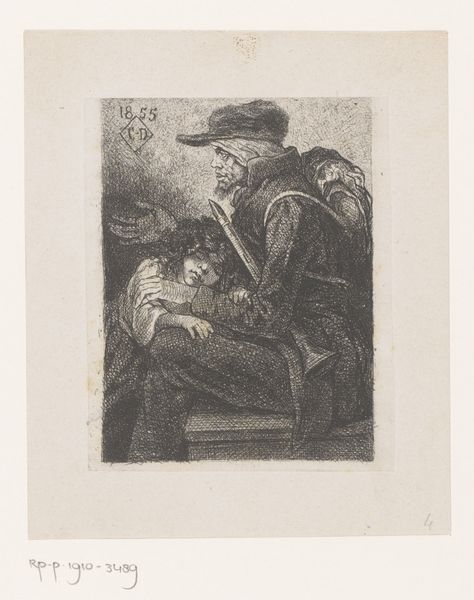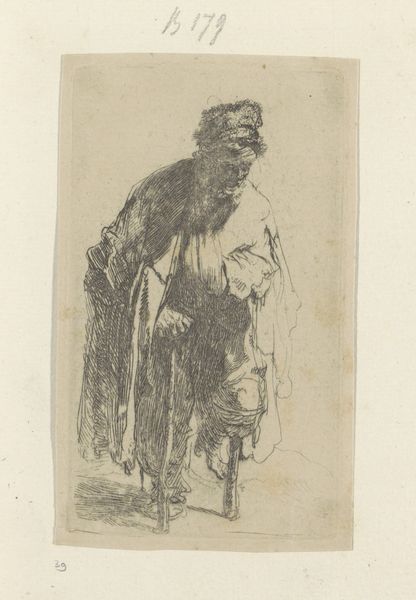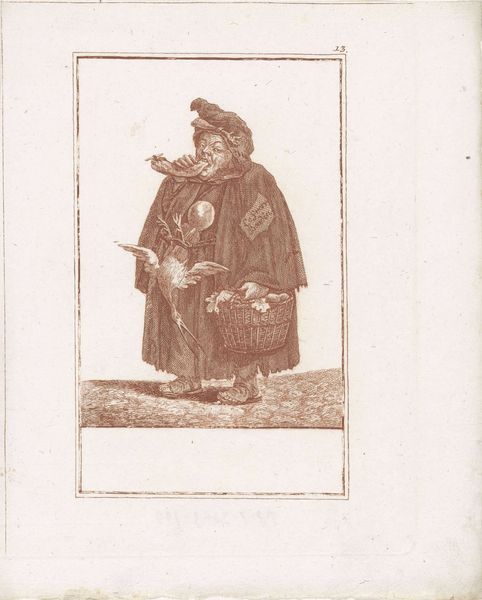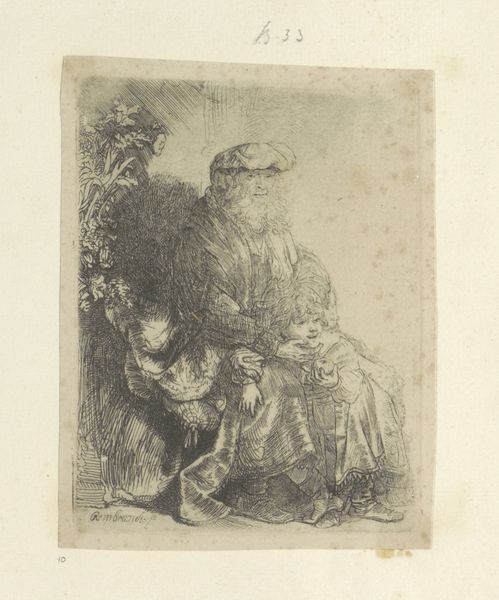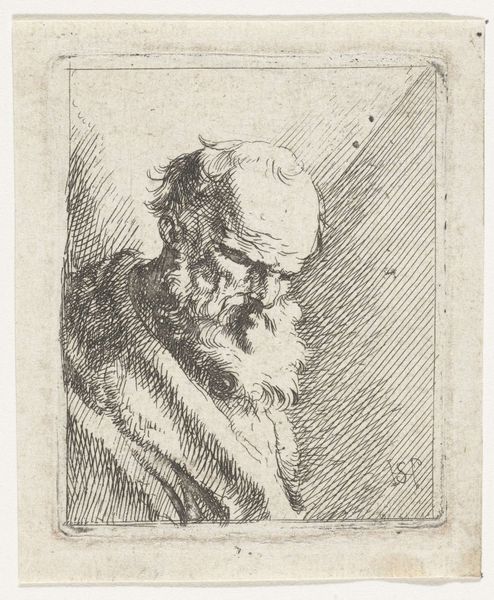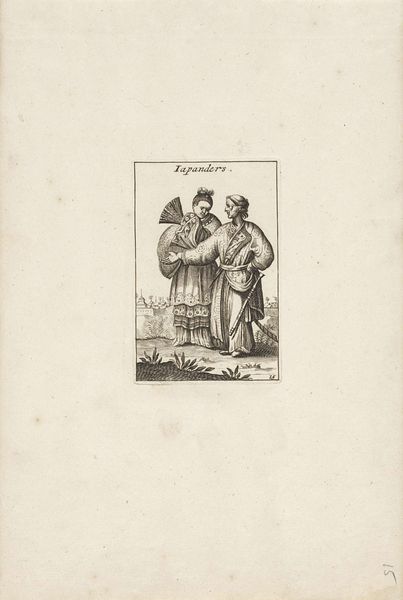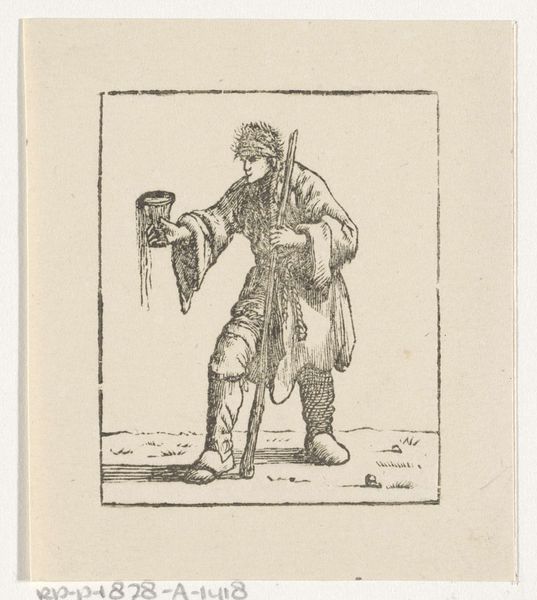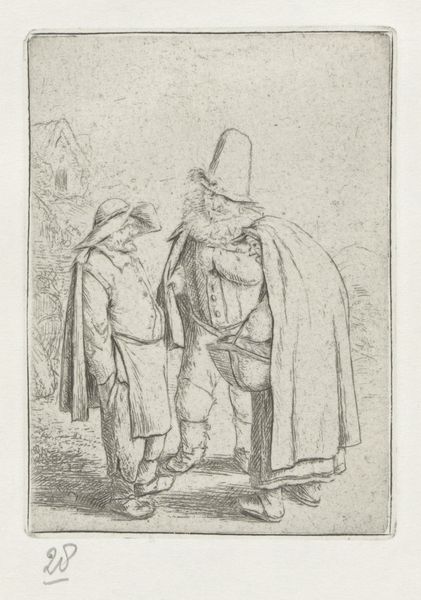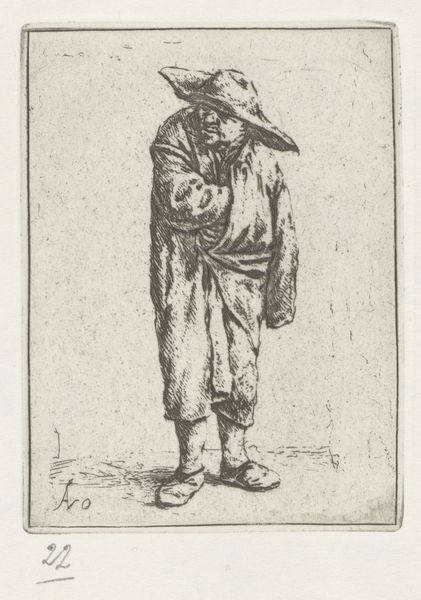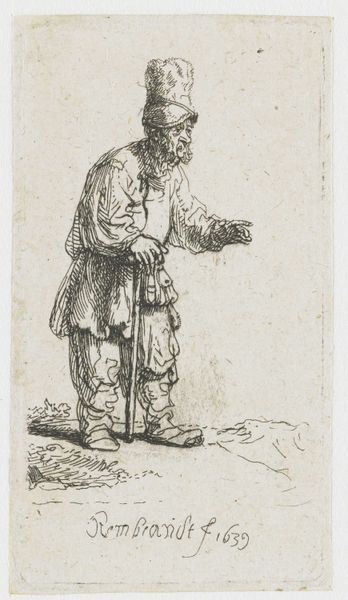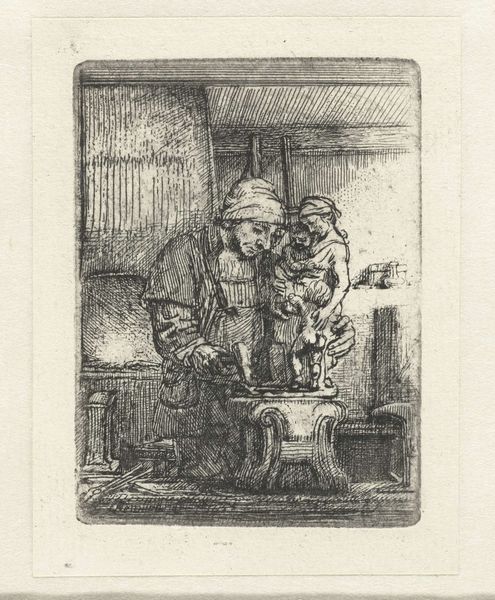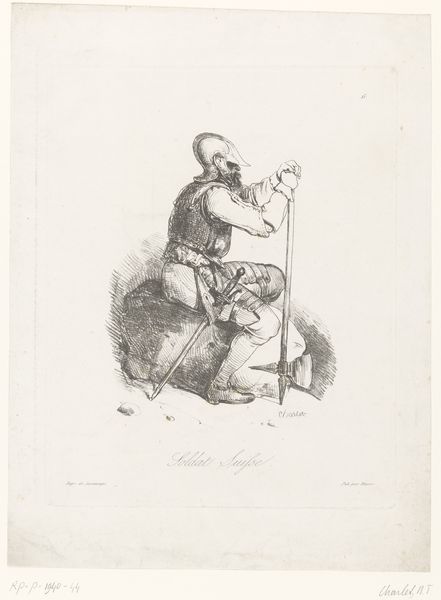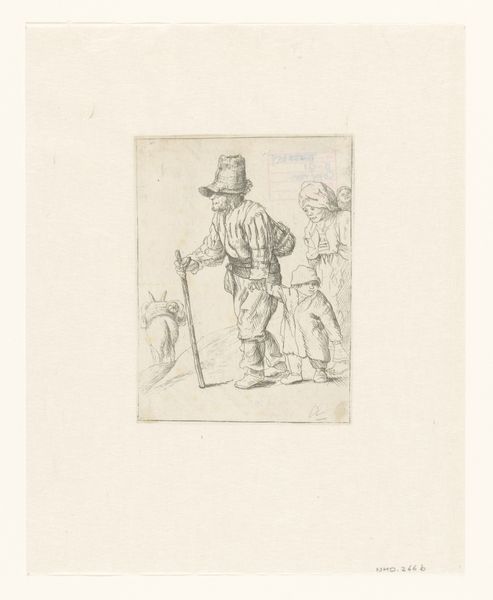
drawing, print, engraving
#
portrait
#
drawing
# print
#
figuration
#
romanticism
#
line
#
genre-painting
#
engraving
Dimensions: height 102 mm, width 80 mm
Copyright: Rijks Museum: Open Domain
William Henry Hunt created this etching, "The Quacksalver," sometime in the first half of the 19th century. As an etching, it involves a prepared metal plate, likely copper or zinc. The artist would have coated it with a waxy, acid-resistant substance, and then scratched an image into that coating with a needle. The plate is then bathed in acid, which bites into the metal wherever it has been exposed. The resulting lines, with their characteristic crispness, allowed Hunt to capture a scene of commerce and human interaction. The figure, presumably a seller of dubious medicines given the title, is rendered with remarkable detail. Note the clothing and the paraphernalia of his trade, down to the sword at his side. In its time, printmaking was tied to the burgeoning market economy, and the artist was very much an artisan as well as a creative individual. Etchings such as these were relatively inexpensive and could be widely disseminated, reflecting and shaping the social and cultural landscape of the time. By focusing on process and context, we can appreciate the skill of the artist, and also the role of this image within a wider network of production and consumption.
Comments
No comments
Be the first to comment and join the conversation on the ultimate creative platform.
